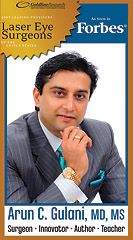
Perils of Vaping, the New Craze - Part II

On July 11, an 18-year-old girl was admitted to the Children’s Hospital of Wisconsin, Milwaukee, ashen in color, fatigued and gasping for breath. Chest X-ray showed severe abnormalities suggestive of widespread pneumonia but this wasn’t an infectious pneumonia. She was seen in an urgent care facility four days earlier and was prescribed antibiotics that obviously didn’t make any difference. Now, she was fighting for her life. Fortunately, she improved after several days of intensive care including ventilatory support.*
It turned out that the girl was vaping a product containing nicotine. Over the past several weeks, emergency room physicians have seen many similar cases of a mysterious lung disease presenting with severe shortness of breath. After extensive investigations including studying their medical histories and questioning relatives and friends, the cause of this strange disease became clear. All of them were vaping, e-cigarettes or vaping pens, some containing only nicotine, the main product in regular cigarettes but many others also contained a marijuana ingredient called THC as well, which is a much stronger substance.
The Center for Disease Control and Prevention has confirmed that there have been 1,080 cases of vaping-related lung illness across the nation, including 24 deaths, as of Oct. 10. And there is no end in sight? Nearly half of these deaths occurred in people below the age of 21 years. This is absolutely a horrific tragedy – our healthy teenagers suddenly succumbing to e- cigarettes and vaping pens, man’s new invention! The U.S. Food and Drug Administration has initiated a criminal probe into this new epidemic.
Vaping, e-cigarettes or pens, have become the rage among teens and young adults, and the ENDS (Electronic nicotine delivery systems) business has mushroomed into a billion-dollar enterprise ready to take over from the traditional tobacco industry. Although these cigs and pens contain a mix of glycerol, propylene glycol, nicotine, benzoic acid and other flavorants, some have started adding marijuana and other dangerous products. While the health effects of inhaling these ingredients aren't well-known, one thing is certain: nicotine is a highly addictive substance — and each hit of the Juul (the popular brand) packs quite the nicotine punch.
When e-cigs were introduced a few years ago under the pretense of “helping to quit the tobacco smoking habit”, health authorities raised the big question, “Are e-cigarettes safe?” Now plenty of data about the harmful effects of e-cigarettes have emerged. It appears that all the damage from cigarette smoking we have been trying to prevent will be reproduced by e-cigarette smoking, maybe even more!
Vaping has clearly taken off among kids. A recent national survey of 42,531 eighth-12th graders, published in The New England Journal of Medicine, concluded that “at least 25% of high-school seniors have vaped nicotine in the previous month alone while 20% of 10th-graders and 9% of eighth-graders have already done so. And while about 40% of 12th-graders have ever used a nicotine e-cigarette, 36.4% of 10th-graders and 20.7% of eighth-graders have used an e-cigarette.” This is truly mind boggling, right?
The chemical exposure from e-cigs and vaping pens causes an inflammation or injury within the lung tissue leading to shortness of breath, cough, chest pain and malaise that quickly progress to the point of needing hospitalization and intensive care management. Many also develop vomiting and diarrhea, fever and weight loss. If the treating physician is not aware of the connection (often patients won’t divulge the fact they were vaping), the patient may not get proper treatment, which is what happened to the teenage girl in the case described earlier.
We still don’t know the specific cause of the vaping-related pulmonary injury but most likely it’s a combination of nicotine, various flavoring agents and other chemicals. More dangerous are the additives like aldehydes, marijuana and THC (tetrahydrocannabinoid), a psychoactive ingredient in marijuana; the latter is available only in black market.
Antibiotics won’t work since this is not caused by a bacteria or virus. The patients are often critically ill needing the full spectrum of intensive pulmonary management. The pulmonary effects of other ingredients like propylene glycol and glycerol, the main solvents of e-liquid, have not been thoroughly investigated. Recent studies suggest they may affect adversely not only the function of lungs but can contribute to diabetes, seizures and other maladies! So, it’s time to put our heads together to protect our children from this serious, often lethal new disease.
* As reported in a recent Wall Street Journal
Will conclude in the next issue …
M.P. Ravindra Nathan, M.D., is a cardiologist and Emeritus Editor of AAPI Journal. For further reading, “Second Chance - A Sister’s Act of Love” by Dr. Nathan from Outskirts Press, can be found at www.amazon.com
EYE CARE
Happy Holidays: Set your Sights on 20/20

Recently, U.S. Food and Drug Administration approved lens technologies for your eyes, which may be the best investment you can make during this holiday season of spend and plenty. Especially, if you are over 60 years of age and been diagnosed with cataracts. Get ready for your vision of 20/20 as you look forward to year 2020.
This is also a great time to live for those over 40 years of age and dependent on those pesky “reading glasses”. The currency of spoil and grandeur has changed from “material” to “experience” and never before so high as vision to enjoy the rest of your life with.
FIVE Most common questions by patients with Cataracts:
- Do I have to wait till my cataracts ripen/mature? No, not anymore! In fact if you wear glasses for any reason, nearsightedness, farsightedness or astigmatism, as long as your eyes are healthy, you don’t need to wait to start seeing clearly without glasses (refractive cataract surgery).
- Why was I given so many confusing choices for lens implants for my cataract surgery? Your cataract having been a lens, needs to be replaced with an artificial lens and there are over 30 different lens technologies available in the U.S. and nearly 75 worldwide. Do your research and don’t fall for only two or three choices. Ask questions and explain your vision goals to your eye doctor.
- Why am I wearing glasses after cataract surgery? In some cases, you may have some glasses’ number despite surgery and this can be successfully corrected using modern laser vision surgery techniques.
- What if I have a corneal problem like Keratoconus or previous Radial keratotomy surgery? Can I still have cataract surgery? Yes, you certainly can and even in such cases result mostly with vision without glasses with proper planning and technology choices.
- Can complications of cataract surgery be corrected? As long as your retina is fine and potential to see is maintained, most complications of cataract surgery can be successfully corrected to excellent vision not only for anatomical damages but also for vision using staged laser techniques.
This holiday season, the riches to compare and flash is neither diamonds, nor gold. The present currency is lens implant for your cataract surgery. The cost of this implant is a direct correlate to how much your loved ones really love you.
So, you go to your eye doctor’s office and are diagnosed with cataracts. Before you can mourn about this obvious testimonial to having aged, you are given a menu of lens implants to choose from – a full range of affordable to magical!
You leave your eye doctor’s office scratching your head and turn to your trusted source of medical information: Google!
Industry already knew that would be your only recourse and built widespread advertisement campaigns online. And so you are smothered with choices explained in terms they hope challenge your aging brain to succumb to the shiniest and most expensive technology, which somehow you justify as a mark of wealth.
OK, let’s get serious.
This is the most confusing factor many patients today face once they are diagnosed with cataracts. What lens implant to choose and how to understand their impact on their vision?
I have reviewed the dilemma in previous KhaasBaat articles and summarized for you on how to select the best implant for you, what to do with side effects and also on how to correct complications, including exchanging the lens implants.
All of us understand that during cataract surgery, the cataract is removed and an artificial lens implant is inserted in our eye. Until recently, there were no choices and life was simple: boring and monofocal!
With technology innovations, we now have lens implants that come with various functions, including multifocal (progressive) to help you see distance and near, toric (to correct astigmatism), bifocal, trifocal, photocell and even adjustable and re-chargeable. A thorough exam of your eye, including its optics and health, can help determine the lens implant that will most likely result in vision without glasses.
I encourage you to believe that your surgeon is more knowledgeable than Google and you must sit down with him or her and ask questions about pros/cons. How does the lens implant chosen for you work and how will it translate to vision for your individualized goals” What are the possible side effects and solutions are available if so? Also, have you been offered all lens implants choices available or only those available with that surgeon/office?
Do clearly outline your vision goal (distance, near or both and do you have to have perfect night vision, etc.) Most usually, a combination of your vision goals along with the surgeon’s selection of the lens implant in your best interest can lead to a satisfactory outcome. Anything less than this and you may become a statistic.
Emotions usually run high because of the cost beyond insurance and hence expectations must be clear before surgery. Poor lens implant choices can lead to haloes and star bursts that can challenge the splendor of many a Deepavali lights. By the same token, proper selection of the lens implant and surgical technique is one of the most gratifying surgical outcomes in modern medicine today with a vision outcome that lasts a lifetime with well-earned bragging rights enough to divert the attention from Solitaires and Rolexes to the proud shimmer of your eyes.
This holiday season, I can envision groups of richly dressed people looking into each other’s eyes, comparing their sparkles and testing their vision at all distances even before drinks are served.
So, go ahead and light the sparklers, get the sparkle back in your eyes and prepare for 2020.
Arun C. Gulani, M.D., M.S., is director and chief surgeon of Gulani Vision Institute in Jacksonville. He can be reached at [email protected] or visit www.gulanivision.com